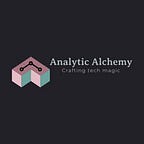I Found an Insight, Now What?
In the world of data-driven decision-making, finding an insight is often seen as an achievement. Most would argue however, the true value of an insight is not just discovering it, but its ability to drive action for the business and their outcomes.
An insight is only as valuable as its ability to inform decision-making and drive action.
This means that simply identifying a pattern or trend in data is not enough; the insight should provide clear guidance on what steps are needed in order to improve a product, service, or process.
5 Ways to Improve Insights Generation
Context
Knowing what the company’s KPIs and business objectives are, is essential for initiating data analysis. They need to be understood within the broader business environment, taking into account factors such as the current situation, market trends, and the competitive landscape.
Sure, there could be insights that are not always along the lines of the business objectives, but ask: does that insight matter to the business? If you can’t answer this, then ask the stakeholders.
Let’s say the business is looking to increase purchases, and they want to see how different audiences are effecting this growth. If they are trying to improve target audiences, then looking into product development doesn’t always make sense, unless there is data to prove (not assuming) that improving or changing the product will increase audience purchases. That is the context.
Using SMART methodology can also help provide context to the insight:
- Specific: Is there a connection between audiences X purchasing product A vs a different audience?
- Measurable: How many more purchases/sales does this audience have compared to other audiences (lift)?
- Action-oriented: If spending increased to Audience X’s buying platforms, that would mean more purchases of product A. Use a multivariate test (Platform A, B with Product A, B and multiple audiences) to validate GTM strategy.
- Relevant: (This example is a Hypothesis) Based on Audience X’s behavior, there can be an expected growth of 25% in purchases from platform B with product A if platform B is prioritized for growth (e.g. changing design to more effectively match audience X preferences).
- Time-bound: This information is based on the last 6 months worth of historical data, and will be updated weekly.
Validation
Providing validation on this insight is key to knowing it’s a true insight. Let’s say that two audiences have similar patterns, but some audiences do not purchase as much. Constantly ask why is that trend/pattern doing that and investigate it.
Validate the insights further by testing for correlation and significance by using statistical models to ensure the data is significant for these findings and are not random such as linear regression or K-mean Clusters.
There is also validation on the business side, such as A/B testing or Multivariate testing to ensure that the insight discovered is valid in the market today.
Actionable
Simply finding a pattern or trend isn’t enough, the insight needs to provide the company with recommendations so they can take action with confidence, like an A/B test or providing better financial investment advice.
If there is a trend in an audience that shows audience X is spending more on a product than audience Y, what is the company able to do with this? Maybe increase the advertising with audience X or maybe with audience Y. Maybe audience Y is not spending as much because they are not aware, or maybe they are just not a good audience to target. An A/B test may be needed to ensure these insights are accurate or having enough data for a statistical model to prove their significance. Investigations are needed (validation) to ensure the insight is actionable and reliable.
Make the recommendation for action!
Easily Explained & Communicated
So, you’ve found the insight, it has been validated, its actionable and has context to the business objectives. Stakeholders need to understand the insight, its implications, and the recommended actions in order to act on it effectively. Your audience may not have time or bandwidth to absorb every detail, that’s the analysts job. It’s probably best to not show a graph with 10 different lines representing 10 different audiences saying this one audience has more sales. Make sure your graphs and recommendations are easily absorbed and communicated to your audience. You can simply put on the slide, Audience X outperforms other audiences in terms of sales, and that it is recommended to do a multivariate test to determine relevance. Then put an aggregated graph to show that validated observation (see photo below for generic slide). If you feel you need to, put in the appendix the granular graph that shows the detailed insights with methods of analysis.
Iteration and Monitoring
Now that actionable insights have been found, make sure that it’s not forgotten. If the company decides to do Multivariate testing, monitor the results using the insight as a benchmark or target. Is Audience X still outperforming the other audiences in terms of sales for product A or did something change? If it changes, then action needs to be taken to generate new insights derived from the new data.
Conclusion
It’s not enough to just find and insight and deliver it. While finding an insight is an important step, the true value comes from the ability to turn that insight into a relevant business action and ultimately, valued change. Again, insights should be actionable, contextualized, effectively communicated, tested and validated, and a part of an iterative process in order to drive meaningful impact in the business world. Check with your team on standardization for insight generation and find what works best for your company and within your industry!
What would you add? Comment Below 🢃
